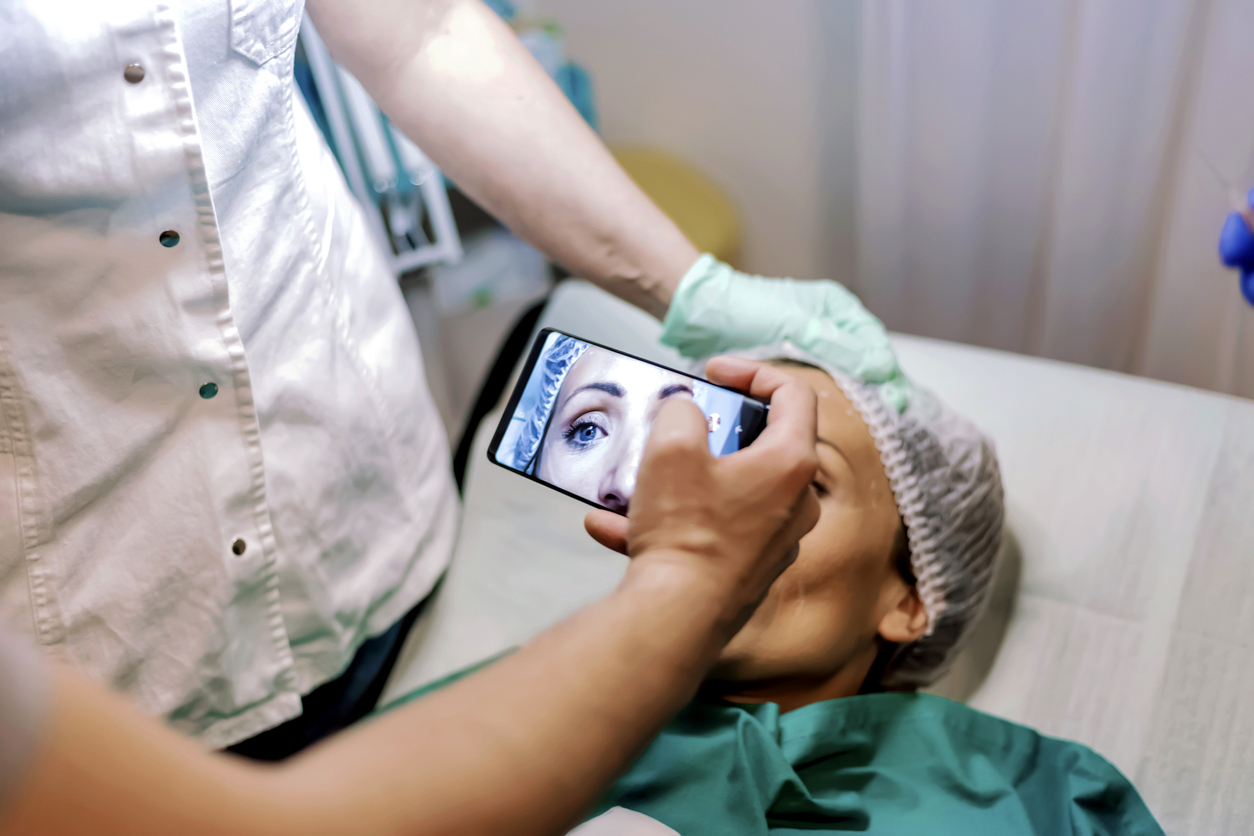Mobile Photos Used for Fast Remote Consultations, Let’s Also Do It Data-Securely
A patient is showing some alarming skin symptoms and needs a dermatologist consultation. Instead of sending the patient to another unit to be examined or having them wait for the dermatologist to show up, the nurse takes a photo of the patient’s skin and sends it to the dermatologist for a remote consultation. After viewing the photo, the dermatologist can then provide advice on what course of treatment to take.
However, photos of a patient cannot be taken or distributed without taking the correct information security measures.
Clinical photography is an invaluable tool for healthcare professionals. The old proverb a picture is worth a thousand words is extremely apt when it comes to areas of medicine that use visual diagnosis, such as dermatology. Photos are included with treatment data and are used for, among others, consultations, monitoring the healing of wounds, examinations and future training functions.
Many healthcare professionals already use smartphones in their work, so it is only natural that the same phone can be used for taking and sharing clinical photos. Naturally, a digital camera/computer combination also works, but it takes time and care to ensure that the photos are not left on the device after sending them.
Example: If the patient’s skin is showing symptoms on different parts of the body, multiple shots must be taken to provide an overall idea of the patient’s condition. In such cases, a large number of photos might be made, which would thus increase the amount of work to manually transfer the data and ensure that none of the photos are left in the device.
Due to the sensitive nature of clinical photos, attention must be given to the proper documentation, storage and sharing of the images.
Data-Secure Use of Photos Taken of the Patient
The patient’s verbal or written consent is required prior to taking photos of them. This is particularly important when taking photos of faces, tattoos or other identifiable features. In order to safeguard the patient’s rights, clinical photos must never be stored on the smart device itself – they must be transferred directly to a secure photo archive used by a hospital or health care centre.
Maintaining confidentiality is more difficult when photos are stored on a smart device (this also applies to digital cameras), thus making them accessible to people not authorised to view them, whether intentionally or unintentionally. Data must also be transferred using a secure connection. The only people who have access to the photo archive are the healthcare professionals involved in treating the patient.
Mobile Photos Help in Making Treatment Decisions
For the aforementioned needs, Medanets has developed a new addition to its product line. The Clinical photos feature can be used by healthcare professionals to take a photo of a patient with a smart device, add detailed information to the photo and, using a secure connection, store the photo directly in a photo archive at a hospital or health care centre – no photo is kept in the smart device itself.
Because the photo is stored electronically, the information will be immediately available for use by other professionals involved in the treatment. Read more about the benefits of real-time patient data. The primary benefit of this feature is its ability to take and share photos of the patient’s condition quickly, easily and securely in order to monitor the progress of treatment and allow other clinicians to assess the situation.
With remote consultation, the need for the patient to move from unit to the next is also reduced, thus allowing the healthcare resources to be allocated more effectively.
Treatment Situations Served by the Use of Photos
1 Skin diseases
Dermatologists are often responsible for a large number of patients over an extensive area. In cases where there is only one dermatologist in a given area, patients may spend hours waiting for a consultation or moving from unit to unit. Dermatologists can often provide advice on the best course of treatment for a patient simply by viewing a photo of the skin condition.
2 Plastic surgery
The conventional before-and-after photos used in plastic surgery can easily be produced with the Photos-feature. The photos contain detailed information on the patient, the person taking the photos and the procedure, along with timestamps.
Plastic surgeons are often consulted on the treatment of patients brought into the intensive care unit to treat wounds. A remote consultation based on the photos provided will convey information on the recommended course of treatment more quickly than waiting for the surgeon to arrive.
3 Wounds
Photos of all types of wounds can be taken on a regular basis to monitor the healing progress. This information helps in making treatment decisions, whether this involves a request for a second consultation and opinion or simply a confirmation that the wound is healing properly.
4 Assault
If the patient has been brought in for the treatment of injuries resulting from an assault, the photo must be taken to determine the treatment situation, protect the patient and document the injuries. Treatment progress can also be monitored by examining the photos.
5 Eye disorders
A preliminary case study shows that smart devices can also be used in eyeground imaging when a specialised lens is mounted to the device’s camera lens. The result is sufficient enough to determine the best course of treatment.
Subscribe to our newsletter to get the latest information on us, our solutions and other healthcare and health technology topics in one package.
